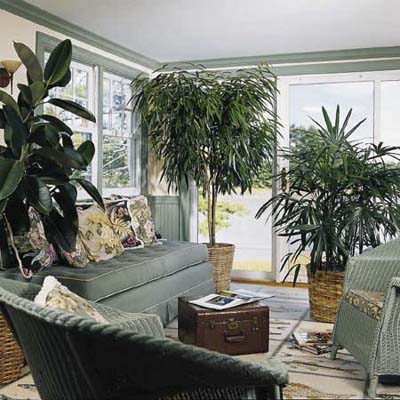Guest Post: House Plants You Can Use As Air Purifiers

A lot of people tend to forget about the many benefits that can be given by a normal house plant. They have become more of an aesthetic than anything, and as a society we forget about the many functions that a plant has and how it can act as a makeshift air purifier and renew the stale air that we breathe in our homes.
Houseplants are truly beneficial and can filter out many of the toxins and pollutants that manage to find their way into our homes air, and it also replaces them with pure air and oxygen. It is a cheap investment that can help us live healthier and freshen the air that we breathe in our homes.
Certain plants are better than others
It’s safe to assume that all plants do this process in some fashion or another. However recent research suggests that certain plant species are much better and more efficient at removing toxins than others so it’s important to know how much space they are able to cover in order to provide your house with the cleanest and freshest air you can.
A healthy aesthetic
All of these plants have distinctive looks that can provide not only fresher air but a beautiful aesthetic to your home. English ivy, rubber plants, a huge variety of palms, dracaenas, and many other varieties all excel at filtering the toxins out of household air, and can liven up any room as well. Lush greens and dark maroon colors can often set the tone of a house and still have a function as well.
Certain plants with Certain Talents
Many plants that specialize in filtering certain toxins can be utilized for clearing the air in certain environments, such as the spider plant which can filter formaldehyde. Gerbera daisies excel at removal of benzene from an area. The larger and healthier these plants the more successful they will be at cleaning the air in your home. They are a pertinent and eco-friendly way at having cleaner air throughout your home and workplace.
New Buildings aren't safe either
Houseplants are most helpful in relatively new homes and buildings. Most people don't expect it but the synthetics of carpet, fabrics, laminated surfaces, plastic coated wallpaper and many other materials that go into building and the design of a building release more toxins when they are first placed, and this means that the air will be the most toxic in the early years of the building. It is important to get plants in these buildings as soon as possible in order to keep the air fresh and clean.
Since a few years back, we have seen more ailments and diseases associated with many of the pollutants that one finds inside of many buildings, even with new buildings constructed and insulated with a seal to try and stop these pollutants, the stale air still just isn't as healthy or refreshing as fresh air.
Essentially there is no home or building that couldn't be helped by a beneficial plant or a few of them. Sadly, most people still continue to move those plants outdoors, and while they are nice to look at no matter where they are placed, the sheer amount of benefits of keeping the plant inside is reason enough to do so.
NASA has done extensive research studying over fifteen species of common house plants over two years, monitoring the toxins in the air, and the results are conclusive that no matter what plant, all are beneficial to the air. Some may be more efficient than others but all of them will benefit the air if kept indoors. NASA has compiled the results for the public to see online, and there is no longer any doubt of the benefits that these plants potentially have to help clean the air in your home.
This was a guest post written by Mirsad Hasic. He is writing for AirPurifierWiz.com.
